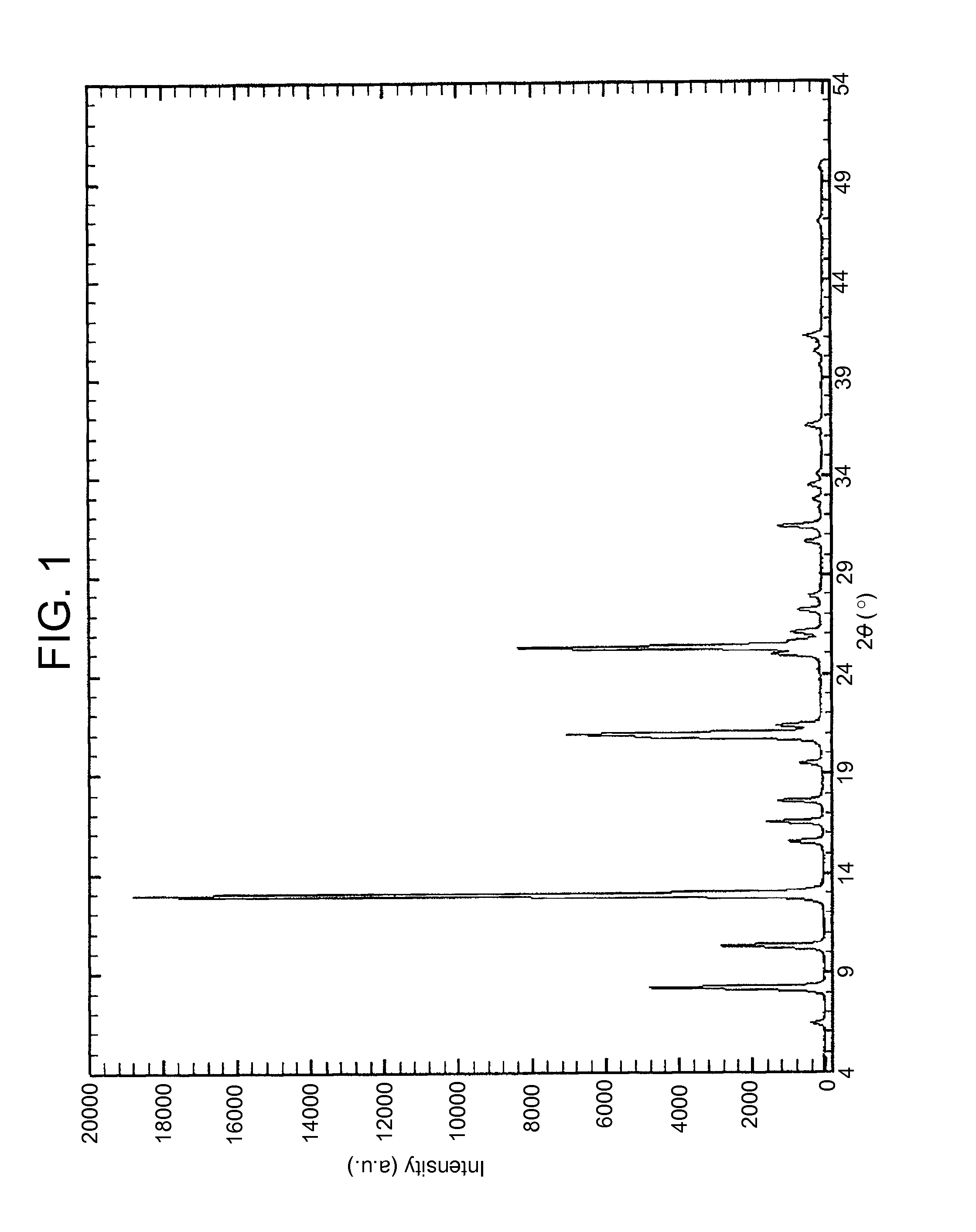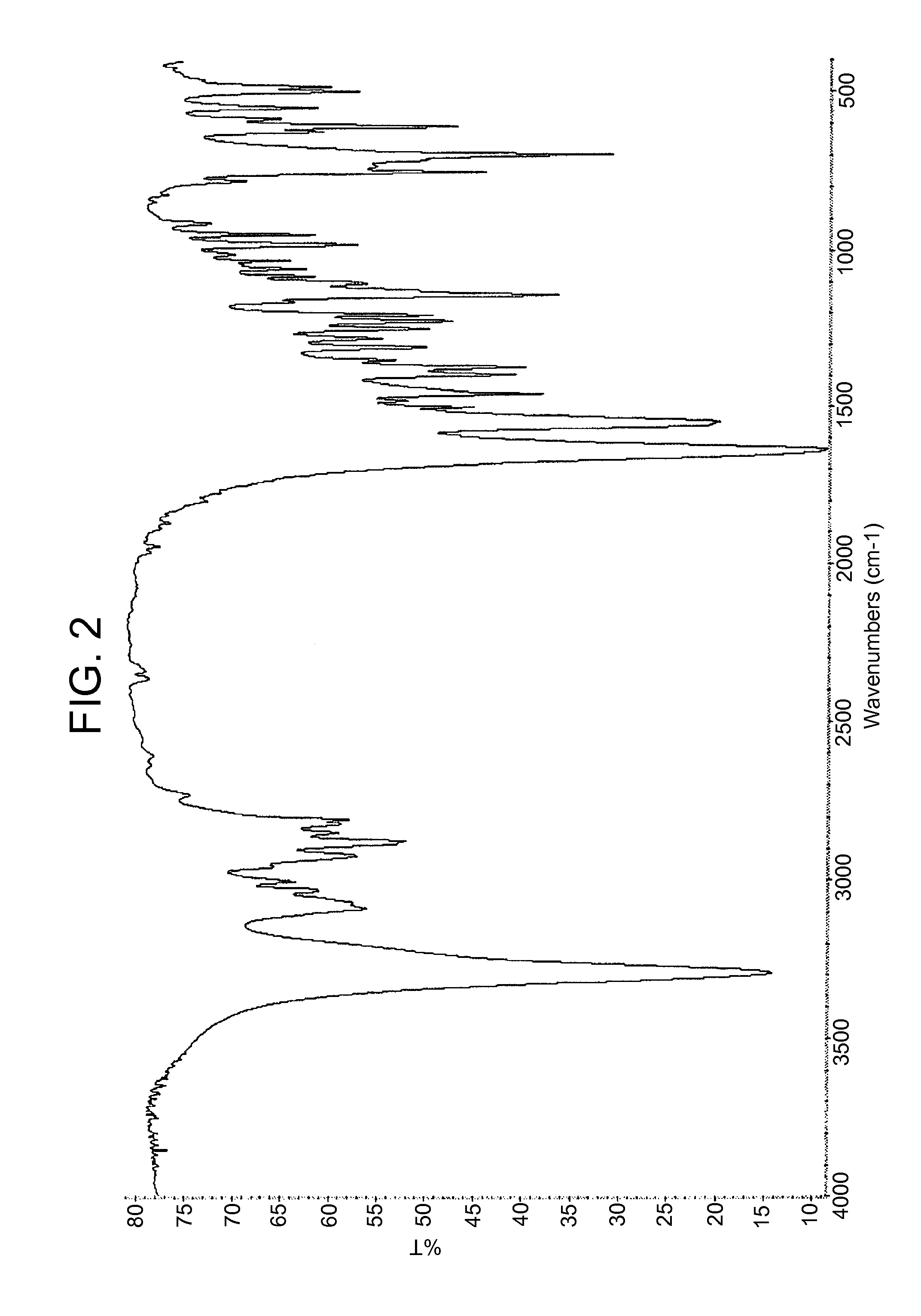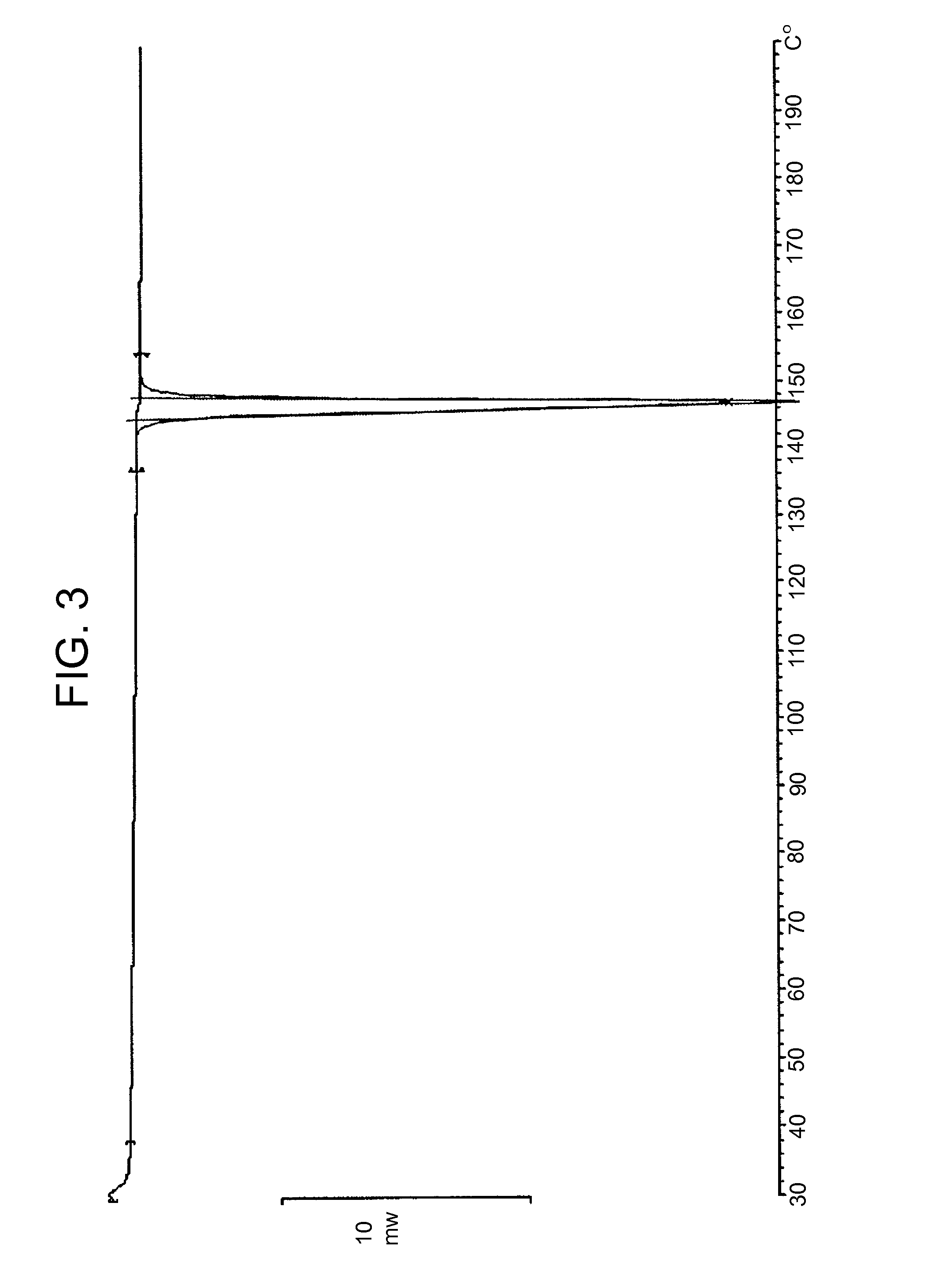Solid forms of an N-(phenylmethyl)propanamide derivative and processes of preparation
a technology of phenylmethylpropanamide and solid forms, which is applied in the field of solid forms of n(phenylmethyl)propanamide derivative and processes of preparation, can solve the problems of inability to report whether the solid is crystalline, the (s)-enantiomer removal during the production of lacosamide is extremely difficult, and the excess of enantiomeric excesses increase.
- Summary
- Abstract
- Description
- Claims
- Application Information
AI Technical Summary
Benefits of technology
Problems solved by technology
Method used
Image
Examples
examples
General Experimental Conditions
X-ray Powder Diffraction (XRD)
[0090]The XRDs were obtained using a RX SIEMENS D5000 diffractometer with a vertical goniometer, a copper anodic tube, and radiation CuKα, λ=1.54056 Å.
Infrared Spectra (IR)
[0091]Fourier transform IR spectra were acquired on a Thermo Nicolet Nexus spectrometer, and polymorphs were characterized in potassium bromide pellets.
Differential Scanning Calorimetry (DSC)
[0092]The Differential Scanning calorimeter used was a Mettler Toledo DSC 823e with Mettler Toledo STARe SW 9.20 software. Samples were placed in open (hermetically sealed aluminium with a vent hole) pan types under nitrogen purge. Sample weights were between 2 to 3 mg. DSC experiments were run from 30 to 200° C. at a heating rate of 10° C. / minute.
High Performance Liquid Chromatography Method (HPLC):
[0093]The chromatographic separation was carried out in a Lux Cellulose 2, 5 μm, 250×4.6 mm I.D column; 40° C. The mobile phase was isopropanol / ethanol / n-hexane (28:10:62...
examples 1-14
Preparation of Lacosamide Crystalline Form I
[0103]These examples illustrate a process for preparing lacosamide crystalline Form I.
[0104]Lacosamide (150 mg) was dissolved in a solvent at room temperature or reflux temperature of the solvent (see Table 1). The solutions were allowed to cool to room temperature (if necessary) and were filtered or the solvent slowly evaporated at ambient pressure / temperature, or at 40° C. under vacuum. The obtained solids were analyzed by XRD.
[0105]The results are listed in Table 1.
[0106]
TABLE 1VolumeTempera-ExampleSolvent(mL)tureDryingXRD1chloroform0.5r.t.r.t.Form I2methanol1r.t.r.t.Form I3acetone1refluxr.t.Form I4ethanol1refluxr.t.Form I5methyl10refluxr.t.Form Itert-butylether62-butanol1reflux40° C. underForm Ivacuum7methyl isobutyl1refluxfilteredForm Iketone8methyl1refluxfilteredForm Icyclohexane9cyclopentanone1refluxfilteredForm I102-ethoxy1reflux40° C. underForm Iethanolvacuum111-pentanol1reflux40° C. underForm Ivacuum12isobutyl1reflux40° C. underF...
examples 15-17
Preparation of Lacosamide Crystalline Form I
[0107]These examples illustrate a further process for preparing lacosamide crystalline Form I.
[0108]Lacosamide (150 mg) was suspended in a solvent at room temperature or reflux temperature for 1 h (see Table 2). The solid was filtered and analyzed by XRD.
[0109]The results are listed in Table 2.
[0110]
TABLE 2VolumeExampleSolvent(mL)TemperatureXRD15n-butyl acetate10r.t.Form I16heptane10r.t.Form I17heptane10refluxForm I
PUM
| Property | Measurement | Unit |
|---|---|---|
| 2θ | aaaaa | aaaaa |
| 2θ | aaaaa | aaaaa |
| 2θ | aaaaa | aaaaa |
Abstract
Description
Claims
Application Information
 Login to View More
Login to View More - R&D
- Intellectual Property
- Life Sciences
- Materials
- Tech Scout
- Unparalleled Data Quality
- Higher Quality Content
- 60% Fewer Hallucinations
Browse by: Latest US Patents, China's latest patents, Technical Efficacy Thesaurus, Application Domain, Technology Topic, Popular Technical Reports.
© 2025 PatSnap. All rights reserved.Legal|Privacy policy|Modern Slavery Act Transparency Statement|Sitemap|About US| Contact US: help@patsnap.com



